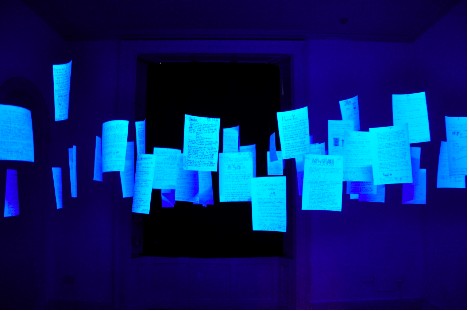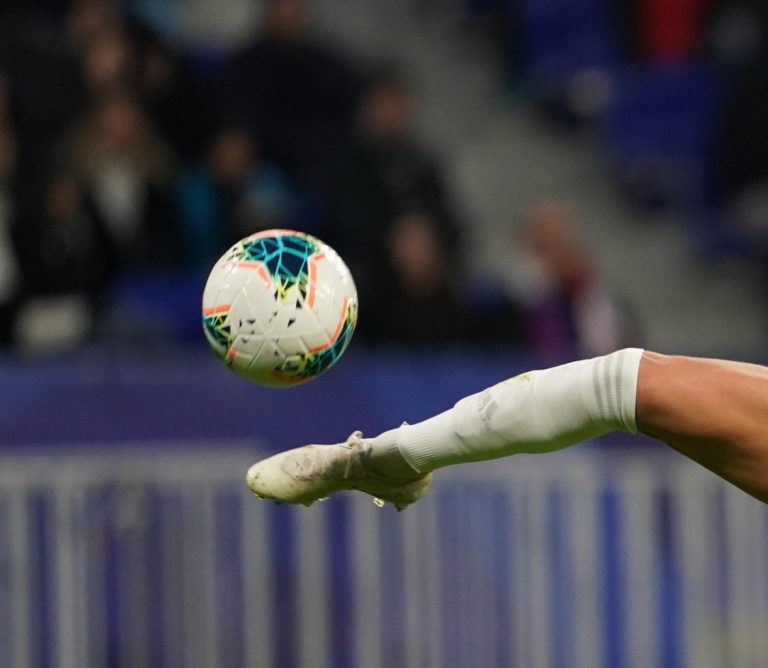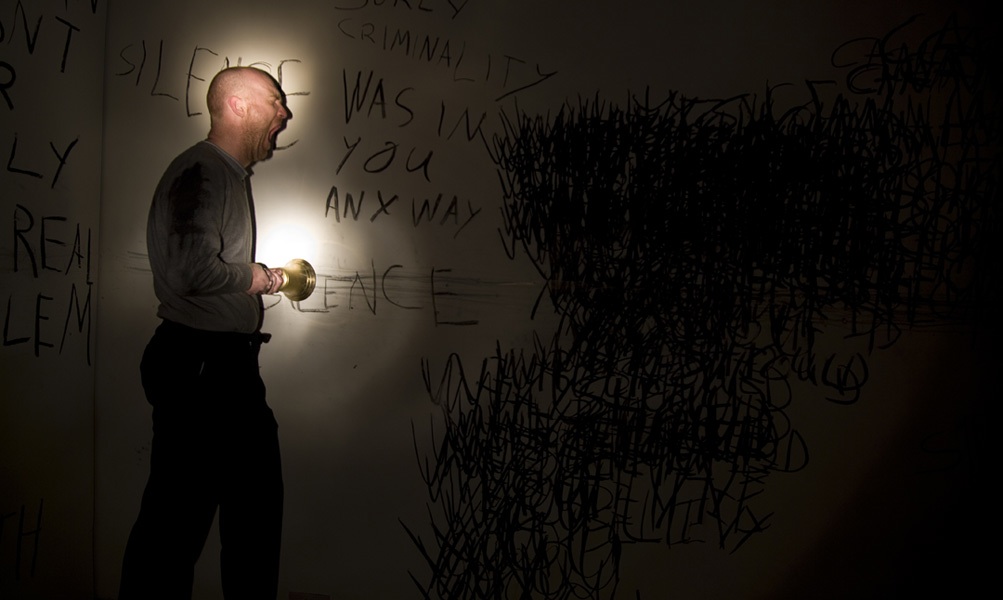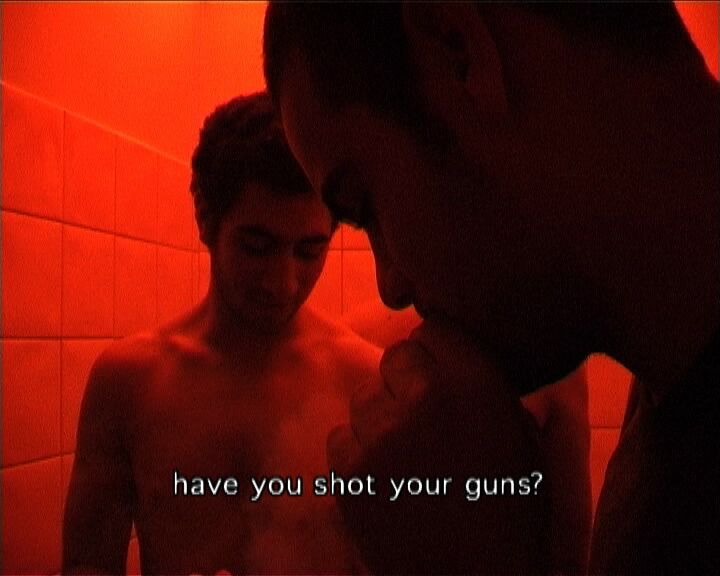Two contrasting shows opened at Galway Arts Centre this spring, running concurrently until late April: Sandra Ann Vita Minchin’s solo exhibition of multi-media works on the first floor Are all the roses blue and the violence red?, alongside the Grúpat collective’s You/Protect on the ground floor. The Grúpat is represented by Freya Birren, Turf Boon, The Dowager Marchylove, The Parks Service, Flor Hartigan, and Jennifer Walshe.
These two bodies of work show very different approaches to contemporary visual art practice. The Grúpat collective comprises a group of artists, musicians and designers who explore social concerns and meditations on art making in a variety of different art media. Their show is eclectic, displaying a plurality of visions and modes of presentation and display. Minchin has a singular approach, her concern is directed towards personal and political sufferings with aesthetically coherent visual language.
At face value, Minchin’s work addresses topical political issues in the Middle East. Her large-scale photographic prints (on hanging industrial plastic screens) feature various female protagonists, naked, but for decorated mask-like hoods hiding their faces. The strange hoods carry sweetheart and red-cross motifs, archetypal emblems of love and healing, belying the abjection of the women’s condition. The crosses and hearts are reminiscent of motifs often used in performance artist Franko B’s imagery, quoting the visceral language of blood as a prevalent contemporary art material. However, the stark figures are situated in dilapidated prison cells, standing together. These women’s bodies become erotic objects devoid of personhood, subjected to torture or abuse (from the implicit narrative we ascertain this horror), and we become voyeurs, complicit in their humiliation.
The statement accompanying the exhibition links a personal experience of bodily suffering to political execution or torture and asks us to address our own psychological and bodily fears through encounter with this work. Minchin brings us to witness these equivocal torments with poignant empathy and uneasy humour.
Bodily affliction is also alluded to in the Grúpat show downstairs. But where Minchin’s work calls into question the function of representation in the face of horror or torture, Grúpat’s polymorphous output is less about representations of social concerns and more about the attempt at representation. For example, one of the Grúpat artists, the concert pianist Flor Hartigan lost three fingers in an accident that consequently rearranged her musical practice dramatically. She now creates sound art for others to perform along with visual scores. Her works are typical of the inter-disciplinary practices of most of the collective.
Jennifer Walshe is the central and curatorial figure in this group. As curator she operates as a conduit between Grúpat’s members, drawing together their various productions (including musical CD’s, books, videos, installations and drawings). The result is a heterogeneous, a dense exploration of the performance of curation itself. Walshe writes in the programme notes:
An artist can aspire to a certain sovereignty, which today implies that in addition to producing art, one also has to produce the conditions that enable such production, its channels of circulation.
As one of the collective, she presents the ghostly installation De Profundis ‘90 comprising a dark space with floating, phosphorescent love letters written in her youth between her and a teen boyfriend. They are authentic, attractive and moving.

Jennifer Walshe: De Profundis ‘90
Installation shot, Galway Arts Centre
2011
Image courtesy the artist.
The inter-disciplinary mixture of products created by this strange mix of artists is imaginative, self–mocking, and a little pretentious. The Dowager Marchylove, a cross-dressing performance artist who creates iconographic images of herself in mock historical costume, is described in an accompanying catalogue:
She is an emissary from the nineteenth century, in appearance a female dandy – a quaintrelle – in practice a musical flâneur, a bearded diva whose leisurely practice of walking and listening helps us understand the city.
There appears to be curatorial irony in Walshe’s self-consciously postmodern modes of appropriation and repeated contextualization of these artists’ works. Many of the works foreground the act of making art itself such as Flor Hartigan’s delicately tentative music score drawings and Turf Boon’s diagrammatic Community Choir drawing series.
Unlike most art collectives (Wochen Klausser or Irwin for example), Grúpat do not express a shared manifesto, the members are ‘nested’ and do not make public appearances except for Walshe. The entire exhibition functions as a labyrinthine installation work, each element relating to the next in an ongoing conversation.
Dr Áine Phillips lives and works in Galway.



